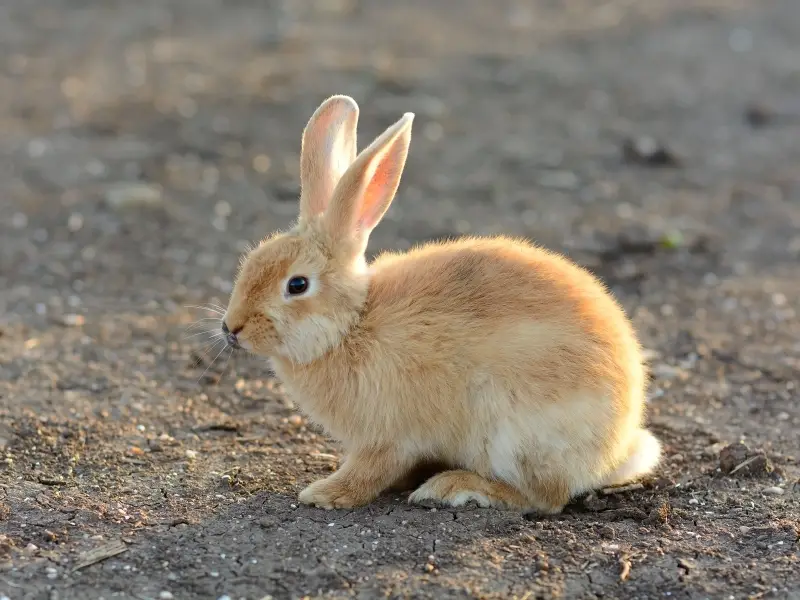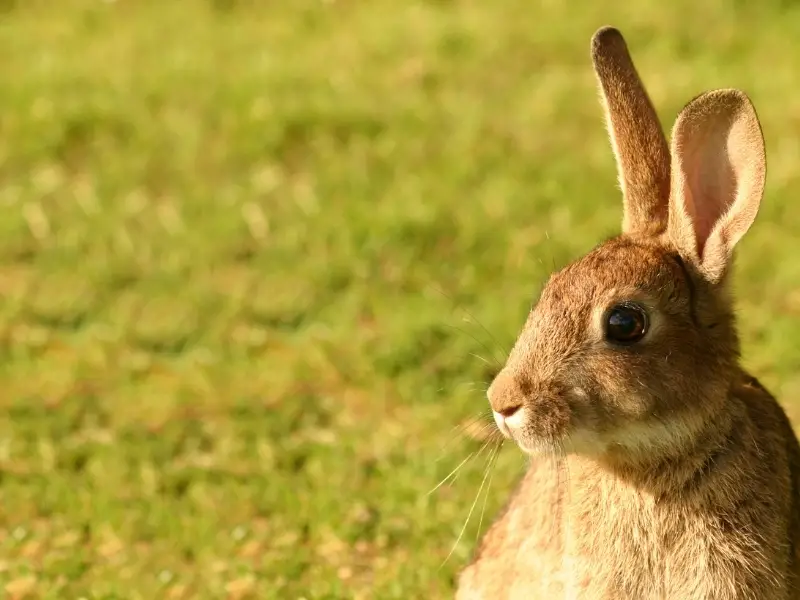When the weather is too hot, dogs cool off by panting, while humans sweat. How do rabbits that don’t pant or sweat regulate their internal body temperature? Through their ears, interestingly enough. But what temperature is too hot for a rabbit, what happens when they overheat, and how can you help your fluff ball cool down?
Depending on the air quality and humidity, when temperatures reach 80-85 ℉, rabbits can start overheating. However, for long-haired rabbits, it already gets too hot for them at 75 ℉. Should the temperature reach 95 ℉ or higher, your rabbit won’t be able to regulate its body temperature.
Let’s learn more about the ideal temperature range for your pet rabbit, how much heat they can tolerate, the signs to look out for when your bunny is overheating, and what you can do to safely cool down Ms. Fluffles.
How Much Heat Can a Rabbit Tolerate?
While rabbits have an internal body temperature of 101-103 ℉, it can tolerate ambient temperatures as low as 40 ℉ to a comfortable 75 ℉. However, the ideal range of temperature for bunnies is 50 ℉ to 70 ℉.
If it gets hot and your area’s temperature reaches 80-85 ℉, your bunny may start showing signs of overheating; however, this depends on the level of humidity and air quality.
If you have a long-haired rabbit, you’ll see signs of overheating at 75 ℉.
Should the temperature go as high as 95 ℉, then your bunny will no longer be able to use its ears to help regulate its internal body temperature.
Can Rabbits Overheat?
If the environment gets hot enough, especially during the summer months, any animal can overheat, and bunnies are no different. When an animal overheats, they usually have survival mechanisms to help them cool off. Two of the common self-cooling off techniques are sweating and panting.
Rabbits can’t sweat or pant. Their ears help them control their body temperature. While some heat can be lost through their ears, this may not be enough if it is too hot.
When your long fluffy-eared bestie overheats, it is called hyperthermia, and it can lead to heatstroke, which can be fatal.
Whether your bunny lives indoors or outdoors, it is at risk of hyperthermia. The risk increases if your bunny’s hutch is in direct sunlight.
You may think you can rely on the temperature reading of a wall-mounted thermometer; however, this air temperature reading is different from how hot the ground your bunny hops on is.
Humidity is also a key factor as higher levels of humidity mean your rabbit overheats quicker than if the air is dry.
While you may be somewhat comfortable when it gets really hot, your bunny won’t be. Thus, it is vital to check your bunny for signs that it’s overheating.
How Can I Tell If My Rabbit Is Too Hot?

If your summers are really hot or there is a heatwave in your area, stay vigilant and check for signs that Mr. Fluffles may be overheating. The signs you should look out for are:
Sign 1: Hot Ears
If the weather starts getting hotter, touch your bunny’s ears every now and then. You can easily do this while petting and playing with your rabbit.
If their ears feel hot or even look red, it will be one of the first clues that your bunny is struggling.
Sign 2: Moisture Around Its Nose
If the area around your bunny’s nose is wet, then this is another sign that your rabbit may be overheating. If the heatstroke is severe, your bunny may also have a nose and mouth that is tinged blue.
Sign 3: Hyperventilation or Shallow Breathing
If your rabbit is experiencing heat exhaustion, then it may be in distress. You will notice that your bunny is breathing unevenly and its nose may be twitching more than usual.
Sign 4: Salivating
Bunnies aren’t like dogs that may slubber, so if you see your rabbit salivating, it’s a sign that it’s experiencing hyperthermia.
Sign 5: Lethargy
Another sign to look out for is when your bunny seems to be low on energy and moves around very little. There will be little to no hopping around or being playful with your or the other bunny.
Feeling lethargic also accompanies a lack of appetite.
Sign 6: Seizures
If your bunny is suffering severe heatstroke, then it may start having convulsions or seizures.
Sign 7: Confusion
A sign of severe hyperthermia is when your bunny appears out of sorts and disoriented.
How to Keep Rabbits Cool
When you notice that your rabbit is overheating, follow these steps to help it cool down:
Step 1: Switch on the Fan or AC
If your rabbit stays outside, you can either put their hutch in the shade or bring the bunny inside. Switch on the air conditioning or the fan, and keep this on as long as the ambient temperature stays near and over the 80 ℉ range.
If you switch on the fan, don’t have it blowing air directly at your bunny. Instead, put the fan on its oscillating function to cool down the room your bunny stays in.
Step 2: Give Your Bunny Cold Water
Place cold water from the fridge in your bunny’s water bowls, and you can add a few ice cubes too. Remember to replace the water at least twice a day so your bunny has fresh water to drink.
Step 3: Place Ice Bottles in the Cage/Hutch
When it’s really hot, you can also freeze water bottles (filled with water, of course), and then place them around your bunny’s cage or hutch. When Ms. Fluffles needs relief from the heat, she can lie next to a bottle.
Alternatively, you can use ice packs.
Step 4: Spray Their Ears
When you see your rabbit overheating, spritz a little bit of cool water onto their ears with a spray bottle. Don’t soak the ears, and never soak your bunny with cold water as this will put it in distress and your bunny could have a heart attack from the shock.
Step 5: Build a Towel Fort
Wet a towel and ensure it isn’t dripping by wringing it. Then place it over an area of your rabbit’s cage. When they feel too hot, they can hop to where the damp towel is to help them cool down.
What to Avoid When Cooling a Rabbit Down
When helping your bunny cool down, don’t:
- Place your bunny in cold water; it can go into shock, which can lead to death.
- Feed your rabbit too many frozen treats as this can inhibit digestion.
- Ensure you don’t cool down your rabbit too much; their body temperature should not drop below 101 ℉.
Conclusion
As a responsible rabbit owner, learning as much about your fluffy bestie as is possible is only a good thing. This helps you take great care of your rabbit and ensure it is safe and comfortable even during the hot summer months.
Even if you feel ok when it gets hot, your bunny might not be ok. Be sure to watch out for any signs of distress that your bunny is overheating. Help it cool down but ensure its internal temperature stays between 101-103 ℉.
Related Articles:

